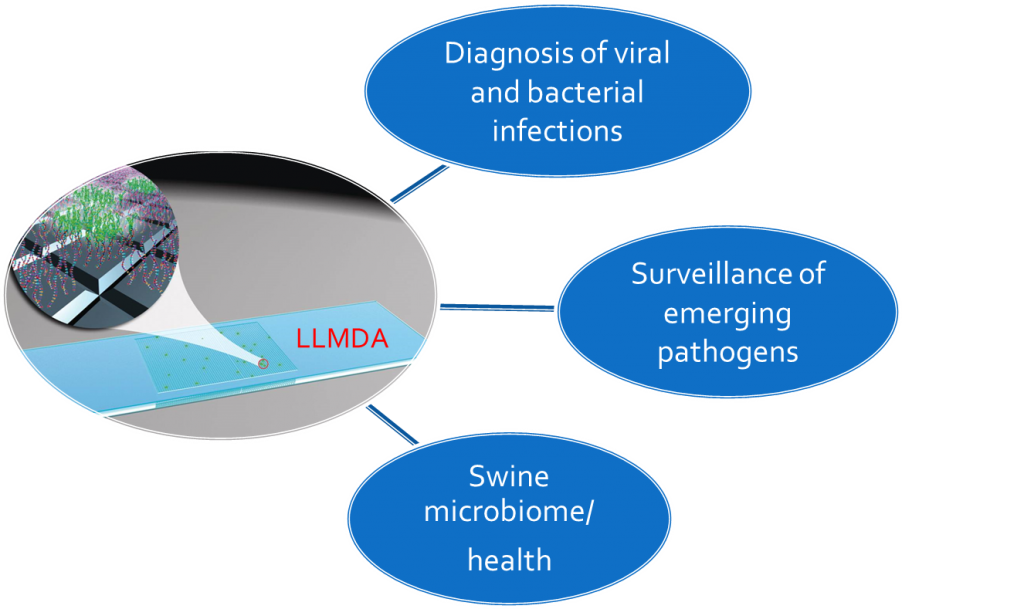Crystal Jaing (14-ERD-081)
Abstract
The identification and control of foreign animal diseases such as foot and mouth disease and swine fever is critical to the protection of U.S. agriculture and food systems. Past outbreaks have occurred in Europe, Central and South America, Asia, and Africa. The cost of eradicating a swine fever outbreak in the Netherlands in 1997 was about $2.3 billion. Swine fever is also a disease of concern for biological warfare. Early detection of disease outbreaks is crucial to the effective surveillance of emerging infectious diseases to safeguard animal and human health. Our goal is to develop new and effective surveillance technologies for early detection of known, emerging, and new foreign animal disease outbreaks; to enable biomarker discovery; and transition the technologies to national agricultural laboratories. In collaboration with Kansas State University, we will not only enhance the scientific foundation for advanced research in agricultural and animal disease pathogens, but also increase our engagement with the national agricultural pathogen surveillance efforts.
We expect to develop at least two novel foreign animal disease and agricultural pathogen surveillance panels—a multiplexed Luminex bead assay to detect swine disease and near-neighbor species, as well as a broad-spectrum livestock pathogen-detection microarray. We are collaborating with researchers at Kansas State University in agricultural pathogen surveillance and detection, and helping to position the Laboratory to be more broadly engaged in developing techniques for detecting global animal disease outbreaks. We expect to transition both assays to Kansas State University as well as international collaborators. Additionally, we are working towards identifying genetic markers that could distinguish virulence capability for African and classical swine fever viral isolates, as well as identifying potential diagnostic biomarkers for classical swine fever infection in pigs.
Mission Relevance
A comprehensive suite of novel technology platforms to rapidly detect and characterize foreign animal disease pathogens will help protect the agricultural economy, food supply, public health, and biosecurity of the nation. This effort aligns with the Laboratory's core competency in bioscience and bioengineering to safeguard the nation against emerging biological threats.
FY15 Accomplishments and Results
In FY15 we (1) continued to engage with a national advisory group with leaders from the Department of Homeland Security, U.S. Department of Agriculture, and industry with quarterly calls regarding the broad utility of our technologies; (2) developed and transferred to Kansas State University the swine respiratory disease multiplex panel to detect pathogens, with additional validation performed at Kansas State; (3) evaluated the Lawrence Livermore Microbial Detection Array for detection of pathogens from swine clinical samples (see figure); and (4) explored expanded collaborations with Kansas State.
Publications and Presentations
- Jaing, C., "Application of a pathogen microarray for the analysis of viruses and bacteria in clinical diagnostic samples from pigs." J. Vet. Diagn. Investig. 27, 313 (2015). LLNL-JRNL-659677. http://dx.doi.org/10.1177/1040638715578484






